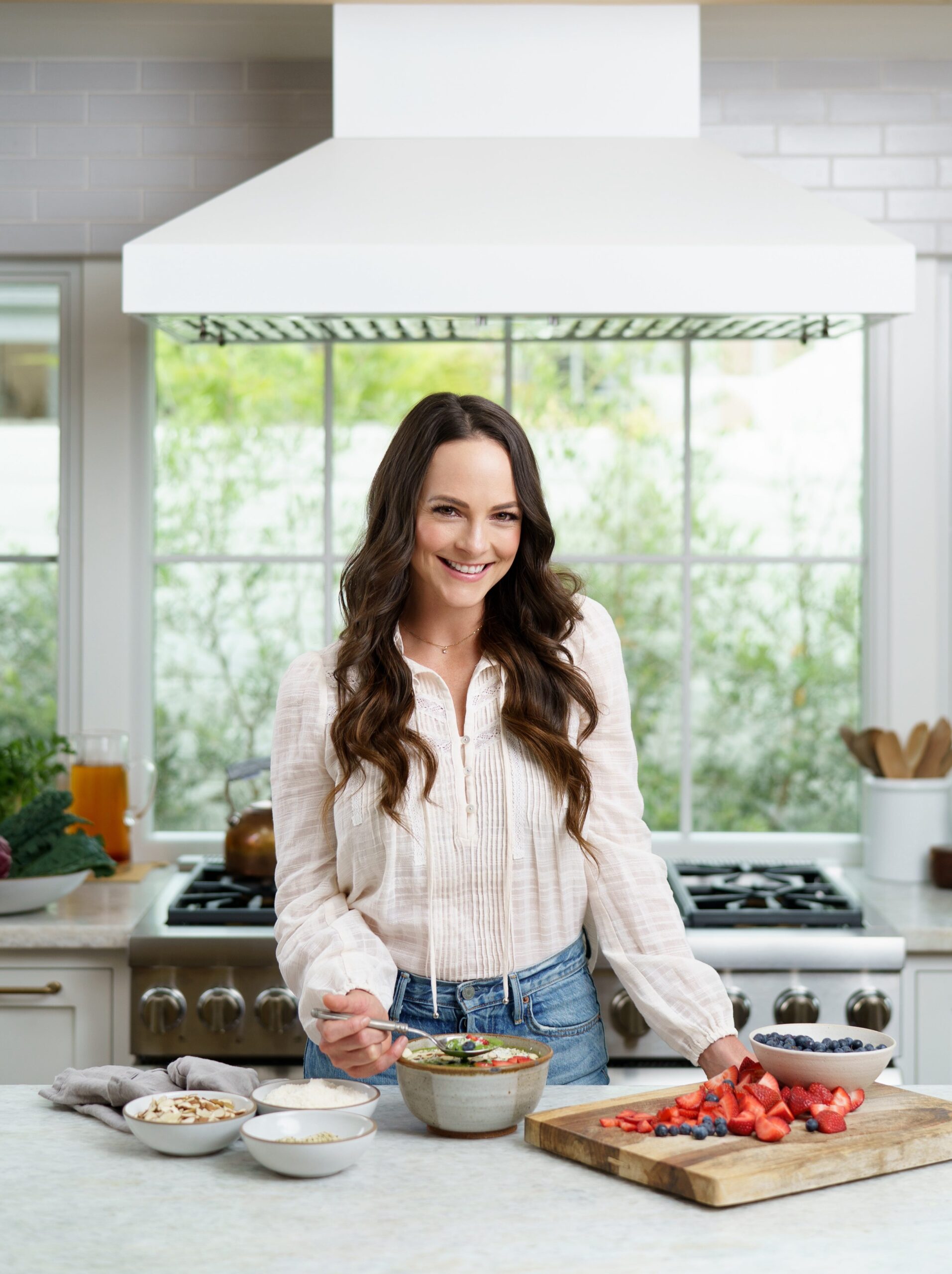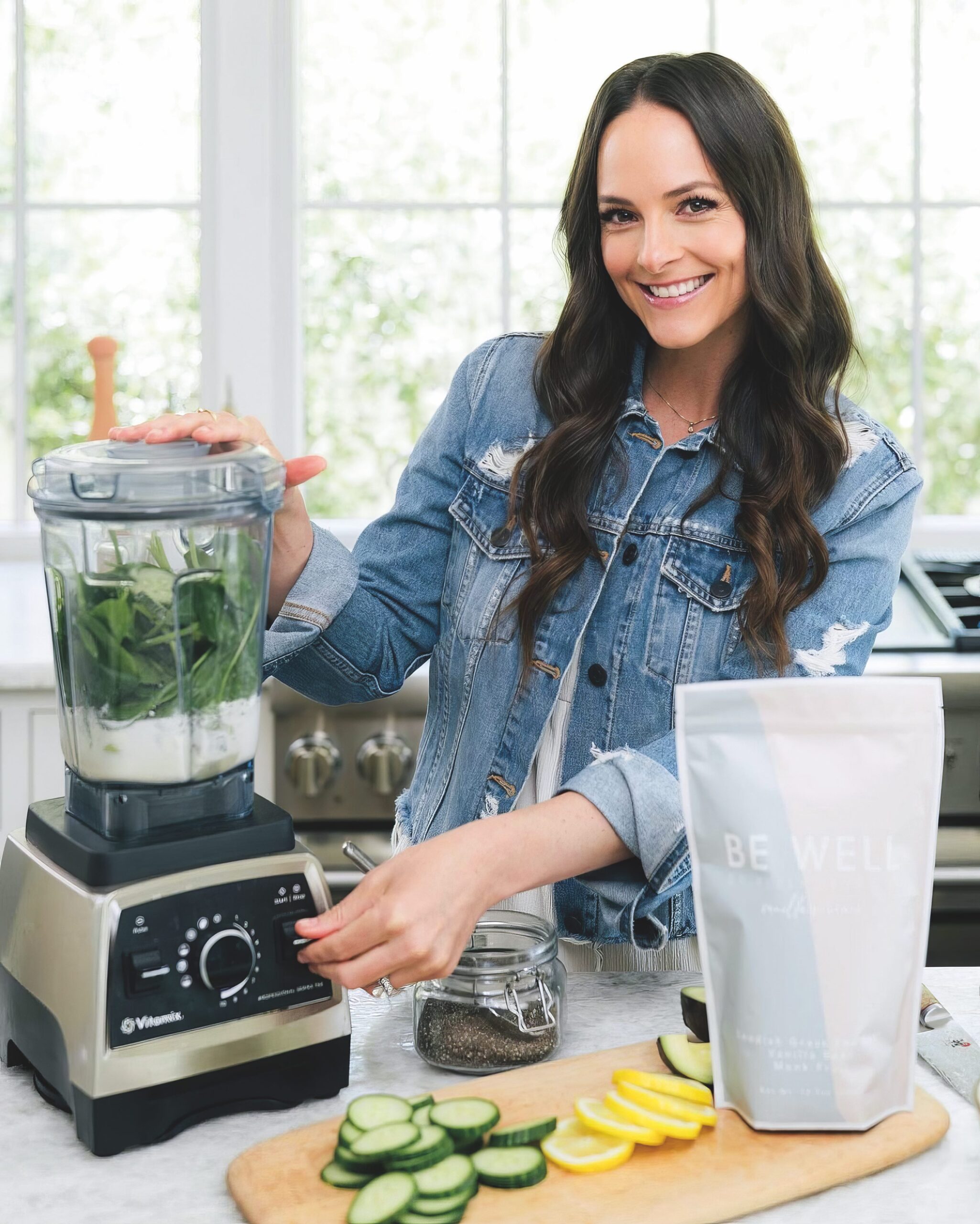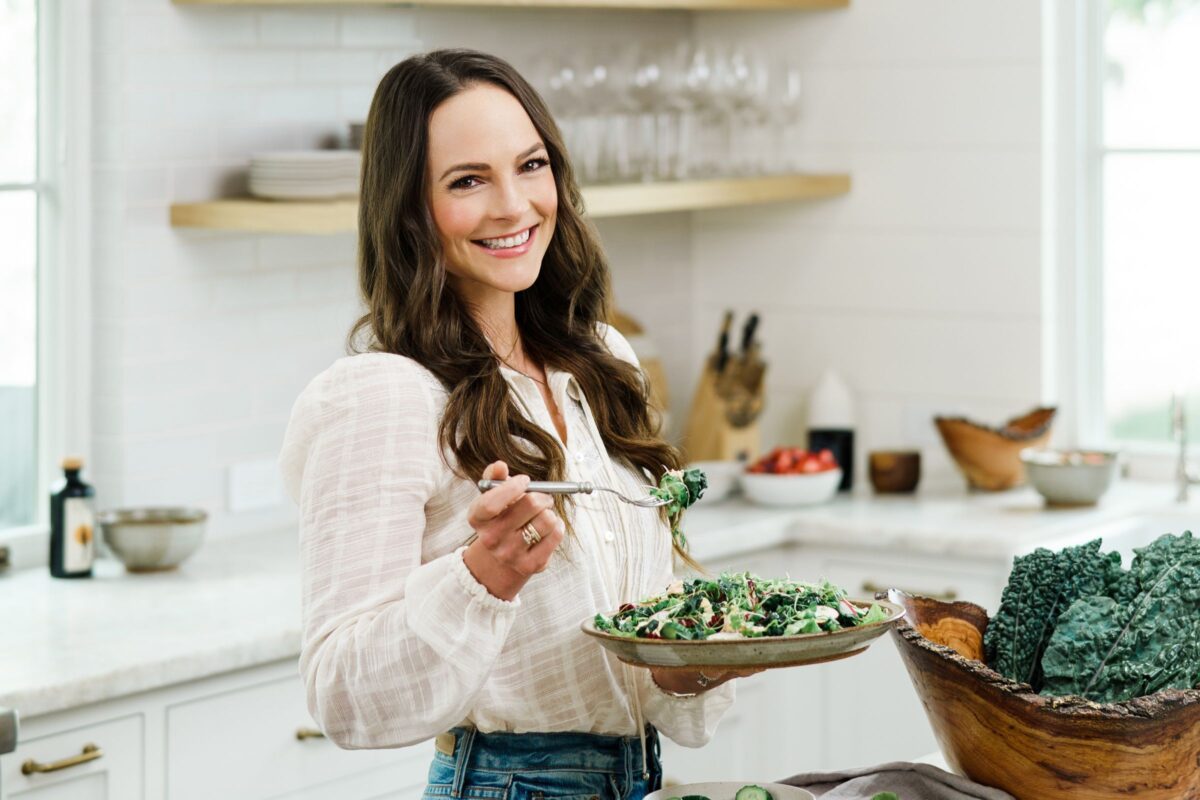Kelly LeVeque always looks for the silver lining.
As a celebrity holistic nutritionist, she spends a lot of time digging into the latest nutrition and metabolic health research and distilling it into information people can easily understand. Often, “our media will take whatever the latest study is and find a scary headline to get readers,” she said. Rather than peddle doom and gloom, she focuses on the good: how easy it is to take action.
Before starting her own health consulting business, Be Well by Kelly, Ms. LeVeque worked in cancer research for Fortune 500 companies. “Not all diseases are preventable, but I was inspired by spending so much time in cancer centers and seeing the benefits of taking care of ourselves and developing holistic habits,” she said. Now, she’s passionate about helping her clients, which have included A-listers like Jessica Alba and Jennifer Garner, do just that.
Her ultimate goal for her clients—and herself—is to make wellness an intrinsic part of daily life, and to see it as a fun adventure. That especially applies to mealtime.

“Every single meal is an opportunity to show up for yourself,” she said. She loves seeing a plate filled with a rainbow of real, nutritious foods. “How we nourish our bodies really plays a role in how we show up in our lives—mood and temperament, tolerance of stress.”
Ms. LeVeque spoke to American Essence about the easy-to-remember formula she follows for eating well; dealing with “mom guilt” as she balances her business and three young sons; and her research-backed advice for getting picky kids to eat their vegetables.
This interview has been edited for clarity and brevity.

I wake up: around 5:30 to 6 a.m. My boys are early risers, so I am up early every morning. First, I’ll have a glass of water with electrolytes; I use a high-sodium electrolyte mix with magnesium and potassium. Having electrolytes makes sure you’re fully hydrated, and I tend to drink less caffeine when I’m fully hydrated. Then I’ll have a black coffee or a coconut milk latte.
When it comes to diet: I’ve always prioritized blood sugar balance. The research there is so robust. We know that dysregulated blood sugar affects mood; it increases your chances of heart disease, diabetes, Alzheimer’s, and a myriad of other diseases. If we understand the science of blood sugar balance, it’s really easy to implement: Eating whole foods will elongate your blood sugar curve [the changes in your blood glucose level over time].
One of the principles I live by is the “Fab Four”: protein, fat, fiber, and leafy greens or vegetables deep in color [in every meal].
For breakfast, I make a Fab Four smoothie. I’m using a scoop of both of my [Be Well by Kelly] protein powders—a vegan plant-based protein powder and a grass-fed beef protein powder—to get 40 grams of protein. Protein satisfies most of your hunger hormones, and it’s needed for many facets of health: your neurotransmitters, hormones, gut lining, collagen production, and muscle mass. Most women drastically under-eat protein, and they feel it. My fat of choice is avocado. For fiber, I use psyllium, which is great for cholesterol and phenomenal at upping your insoluble fiber intake. I add leafy greens—spinach, kale, romaine, basil—and berries.
My lunch and dinner also follow the Fab Four—roast salmon, chicken, roasts with veggies on the side. I never limit the quantity of vegetables.
When I meet my body’s protein requirements and eat real, whole meals, I don’t even think about snacking. It’s counter-intuitive, but if I’m helping a client meet a weight requirement, I’ll have them eat more. Whenever a client has a bad habit of snacking, it’s not about removing those things they’re used to doing; it’s about replacing them.

My best skincare secrets are: sweat and sleep. If you sweat and get good sleep, you see it in your skin.
The more antioxidants in my diet, the more they improve my skin; those are fighting oxidative stress. I try to avoid seed oils because they oxidize under high heat. Those oxidated omega oils become part of your cell membrane.
I do splurge on One Skin products; I’ve noticed a huge improvement in my skin health since using them. I also use a vitamin C product from my dermatologist, and I use a skin brush all over my body.
The wellness equipment I swear by are: my infrared sauna and Peloton. Before kids, I loved going to yoga classes with other people; I love the community aspect. As a mom, carving out that time is hard. I had to become OK with home workouts, and I got a Peloton.
I love my Vitamix. If you get one, you’re investing in something that helps you make healthy food faster.
I also love my red light. I used it on my son when he had eczema; my husband used it for a toe infection. If I’m working on my computer, I turn my panel on.
I use a Yogasleep Dome sound machine in our room and wear a Cozy Earth eye mask. My emotional and mental health depends on whether I’m sleeping well. I have all these screen time limits on my phone, and I can’t get into a single app after 8:30 p.m.
I’m constantly trying to be: outside. We go to our local beach once or twice a week. We take our dinners down there; we watch the sunset. Our boys are used to being in the sand and surf. We put in the effort [to do this], and what we get is our kids being in nature, us being off our phones. It lowers our stress levels in a way that just being at home can’t.

Finding a balance between my business and family life is: hard, but really important to me. You can’t replace Mom, and I don’t want anyone to. I was so blessed to have my mom there for everything when I was growing up, and I do have a level of mom guilt that I’m not showing up for my kids in the same way. But I’m also learning to have boundaries with my work to be able to show up for them in the way that I want. It’s constant negotiation and learning. I have changed my business drastically to prioritize the life and flexibility that I want; that sometimes means turning down big brand contracts.
One thing my husband and I do over the weekend is have a cup of coffee together and make a schedule for the next week, plan recipes, and try to get excited. We work together to make sure we each have time to ourselves so there’s no resentment. Asking what’s really important, and having the strength to set boundaries, are key to making healthy decisions.
My work is most rewarding when: I see long-term beneficial changes in my clients. I once had a client who was a type-A overachiever. She was engaged to be married but not taking care of herself. We took an entire year leading up to her wedding to help her change her lifestyle. She lost over 30 pounds, and her confidence skyrocketed. She was amazing on her wedding day, but what excites me is that she went on to have two daughters, and she now inspires her daughters to take care of themselves through food. To see that generational change feels really good.
My best advice for parents of picky eaters is: to model healthy eating to your children and don’t give up. Research tells us that exposure and modeling are the biggest drivers of instilling a mature palate in a young child. Exposure doesn’t always have to be eating food: Get kids to help with simple tasks in meal preparation or take them shopping to see the food at the grocery store.
It can take 12 to 15 exposures to a new food before a child under 18 months will like it. From 18 months on, that number [of exposures needed] can double. Most parents give up after the third or fourth attempt, but don’t lose hope. Do not stop making that food, plating it up, and eating it in front of them. Don’t put pressure on them, but don’t stop exposing and modeling.
Lately, I’ve been especially excited about: creating content to help moms involve their kids in the kitchen and feed them blood sugar-balancing meals. I’ve learned a lot in the last five years that I want to share with other moms who feel overwhelmed. I feel like my wheels are really turning to support that community.
From July Issue, Volume IV




